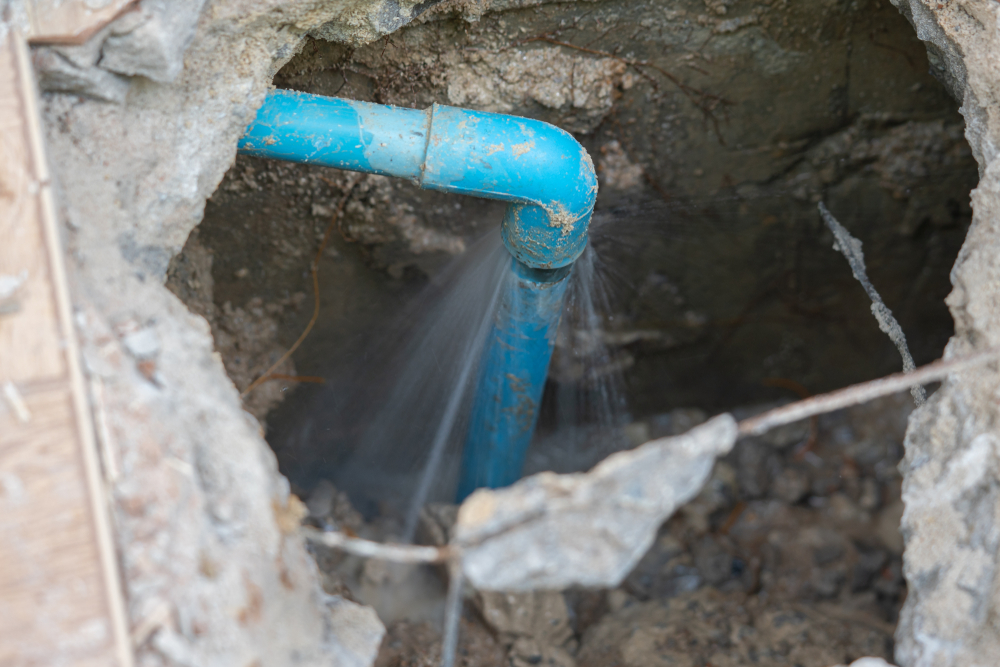Just how to Check If Your Home Has a Concealed Leakage
Just how to Check If Your Home Has a Concealed Leakage
Blog Article
The article following next in relation to Locating water leaks is rather interesting. You should see for yourself.

Early discovery of leaking water lines can reduce a potential calamity. Besides saving you cash, it will certainly reduce the aggravation and also disappointment. The moment you locate a leak, calling your plumber for repairs is the very best service. Some little water leaks might not be visible. If you can not detect it with your nude eyes, here are some hacks that aid.
1. Check Out the Water Meter
Every house has a water meter. Examining it is a surefire manner in which aids you find leakages. For starters, shut off all the water resources. Guarantee no person will purge, make use of the faucet, shower, run the cleaning machine or dishwashing machine. From there, most likely to the meter and watch if it will certainly change. Considering that no person is utilizing it, there should be no motions. If it relocates, that suggests a fast-moving leak. Similarly, if you detect no changes, wait an hour or 2 and inspect back once more. This indicates you might have a slow leak that might also be below ground.
2. Inspect Water Usage
If you spot sudden changes, despite your consumption being the same, it means that you have leakages in your plumbing system. An abrupt spike in your costs shows a fast-moving leakage.
At the same time, a constant rise monthly, even with the exact same routines, reveals you have a sluggish leakage that's additionally slowly intensifying. Call a plumber to completely examine your property, especially if you feel a warm location on your flooring with piping beneath.
3. Do a Food Coloring Test
30% comes from commodes when it comes to water usage. Test to see if they are running effectively. Decrease specks of food shade in the storage tank and wait 10 mins. There's a leakage between the container as well as bowl if the shade somehow infiltrates your dish during that time without flushing.
4. Asses Exterior Lines
Don't fail to remember to examine your outdoor water lines too. Must water seep out of the connection, you have a loosened rubber gasket. One little leakage can squander heaps of water and spike your water bill.
5. Examine the scenario and examine
House owners need to make it a practice to inspect under the sink counters as well as also inside closets for any bad odor or mold development. These two red flags indicate a leak so timely interest is called for. Doing regular inspections, even bi-annually, can save you from a major problem.
Examine for discolorations and weakening as the majority of appliances as well as pipes have a life expectancy. If you believe dripping water lines in your plumbing system, don't wait for it to escalate.
Early discovery of leaking water lines can reduce a potential calamity. Some small water leaks might not be visible. Checking it is a proven way that aids you find leaks. One little leak can throw away heaps of water as well as spike your water expense.
If you think dripping water lines in your plumbing system, don't wait for it to escalate.
WARNING SIGNS OF WATER LEAKAGE BEHIND THE WALL
PERSISTENT MUSTY ODORS
As water slowly drips from a leaky pipe inside the wall, flooring and sheetrock stay damp and develop an odor similar to wet cardboard. It generates a musty smell that can help you find hidden leaks.
MOLD IN UNUSUAL AREAS
Mold usually grows in wet areas like kitchens, baths and laundry rooms. If you spot the stuff on walls or baseboards in other rooms of the house, it’s a good indicator of undetected water leaks.
STAINS THAT GROW
When mold thrives around a leaky pipe, it sometimes takes hold on the inside surface of the affected wall. A growing stain on otherwise clean sheetrock is often your sign of a hidden plumbing problem.
PEELING OR BUBBLING WALLPAPER / PAINT
This clue is easy to miss in rooms that don’t get much use. When you see wallpaper separating along seams or paint bubbling or flaking off the wall, blame sheetrock that stays wet because of an undetected leak.
BUCKLED CEILINGS AND STAINED FLOORS
If ceilings or floors in bathrooms, kitchens or laundry areas develop structural problems, don’t rule out constant damp inside the walls. Wet sheetrock can affect adjacent framing, flooring and ceilings.
https://www.servicemasterbyzaba.com/blog/how-to-detect-water-leakage-in-walls/

We had been made aware of that article on Locating water leaks through an associate on a different blog. Are you aware of someone else who is occupied with the subject? Feel free to share it. Many thanks for going through it.
Report this page